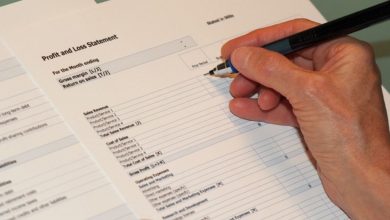
Introduction to the Commodity Market
The Commodity Market, often referred to as a hub for buying and selling raw materials, plays a pivotal role in shaping the world economy. With a rich history dating back centuries, it has evolved into a complex system that significantly influences various industries.
Key Components of the Commodity Market
Commodities Traded
The market encompasses a wide array of commodities, categorizing them into agricultural products, energy resources, and metals. Understanding the diversity of these assets is crucial for anyone seeking to navigate the market successfully.
Major Players
Producers, consumers, and speculators form the backbone of the Commodity Market. Each group contributes to the market’s liquidity and ensures a balance in supply and demand.
Market Structure
The Commodity Market operates through exchanges, where commodities are bought and sold. These exchanges follow specific rules and regulations, providing a structured platform for trading.
How the Commodity Market Functions
Understanding the mechanics of the market involves exploring trading mechanisms, price determination factors, and the significant role played by supply and demand dynamics.
Trading Mechanisms
Commodity trading involves various mechanisms, including futures and options contracts. These financial instruments allow participants to hedge against price fluctuations or speculate on future market movements.
Price Determination
The forces of supply and demand play a crucial role in determining commodity prices. Factors such as global demand, geopolitical events, and weather conditions contribute to the volatility in these markets.
Role of Supply and Demand
A delicate balance between supply and demand is essential for a stable Commodity Market. Fluctuations in either can lead to significant price movements, impacting traders and the industries reliant on these commodities.
Types of Commodities in the Market
Agricultural Commodities
From grains to livestock, agricultural commodities form a substantial portion of the market. Understanding seasonal patterns and the impact of weather on crop yields is vital for traders in this sector.
Energy Commodities
Oil, natural gas, and other energy resources are critical components of the Commodity Market. Their prices are often influenced by geopolitical events and global energy demands.
Metals and Minerals
Precious metals like gold and industrial metals like copper are actively traded in the market. These commodities are integral to various industries, making their prices subject to economic trends.
Participants in the Commodity Market
Producers
Producers, including farmers and mining companies, play a fundamental role by supplying commodities to the market. They often use the market to secure prices for their products in advance.
Consumers
Industries reliant on commodities, such as manufacturing and energy, act as consumers in the market. They participate to secure a stable supply of raw materials at favorable prices.
Speculators
Traders and investors who engage in the market purely for profit through price speculation are termed speculators. Their activities contribute to market liquidity but also introduce an element of risk.
Risks and Rewards in Commodity Trading
The Commodity Market offers both lucrative opportunities and inherent risks that traders must navigate skillfully.
Volatility
Commodity prices are known for their volatility, creating opportunities for profit but also posing significant risks. Traders must employ robust risk management strategies to mitigate potential losses.
Hedging
To counteract the impact of price fluctuations, market participants often use hedging strategies. These involve taking positions that offset potential losses in the physical market.
Profit Potential
Successful commodity trading can yield substantial profits, attracting traders keen on capitalizing on market trends. However, achieving consistent success requires a deep understanding of market dynamics.
Factors Influencing Commodity Prices
Several external factors can sway commodity prices, making it imperative for traders to stay informed and adapt to changing circumstances.
Economic Indicators
Economic indicators, such as GDP growth and inflation rates, can influence commodity prices. Traders need to monitor these indicators to anticipate market trends.
Weather Conditions
Agricultural commodities are particularly sensitive to weather conditions. Droughts, floods, or other extreme weather events can significantly impact crop yields, affecting prices.
Geopolitical Events
Global events, such as political unrest or trade tensions, can cause fluctuations in commodity prices. Traders must be aware of geopolitical developments to make informed decisions.
Successful Commodity Trading Strategies
Achieving success in the Commodity Market requires a strategic approach and a thorough understanding of market dynamics.
Fundamental Analysis
Traders use fundamental analysis to evaluate the intrinsic value of commodities based on economic, geopolitical, and supply-demand factors.
Technical Analysis
Technical analysis involves studying historical price charts and using statistical tools to forecast future price movements.
Risk Management
Implementing effective risk management strategies is crucial for protecting capital and ensuring long-term success in commodity trading.
Future Trends in the Commodity Market
The Commodity Market is poised for further evolution, driven by emerging trends and changing consumer preferences.
Technological Advancements
Continued technological advancements, including artificial intelligence and data analytics, will shape the future of commodity trading.
Shifting Consumer Preferences
Changing consumer preferences, particularly in the food and energy sectors, will influence the types of commodities in demand. Market participants must adapt to these shifts.
Conclusion
In conclusion, the Commodity Market is a dynamic and integral part of the global economy. Understanding its complexities, risks, and opportunities is crucial for anyone looking to engage in commodity trading. As technological advancements and consumer preferences continue to shape the market, staying informed and adopting sustainable practices will be key to long-term success.




